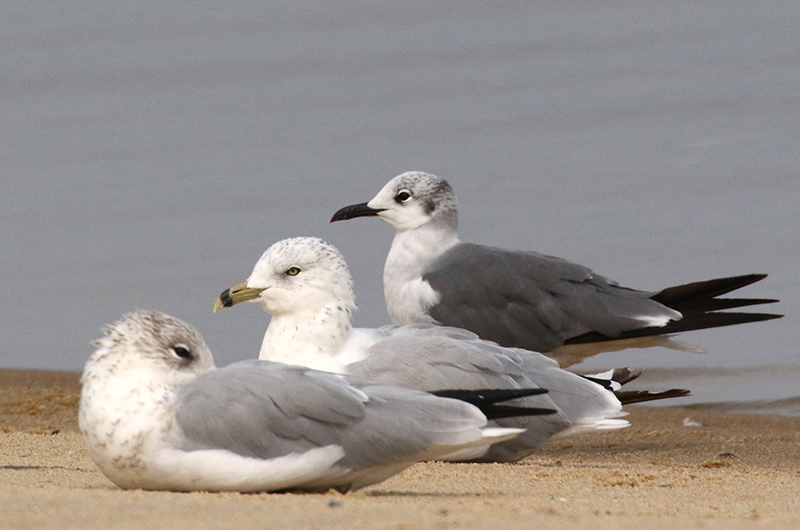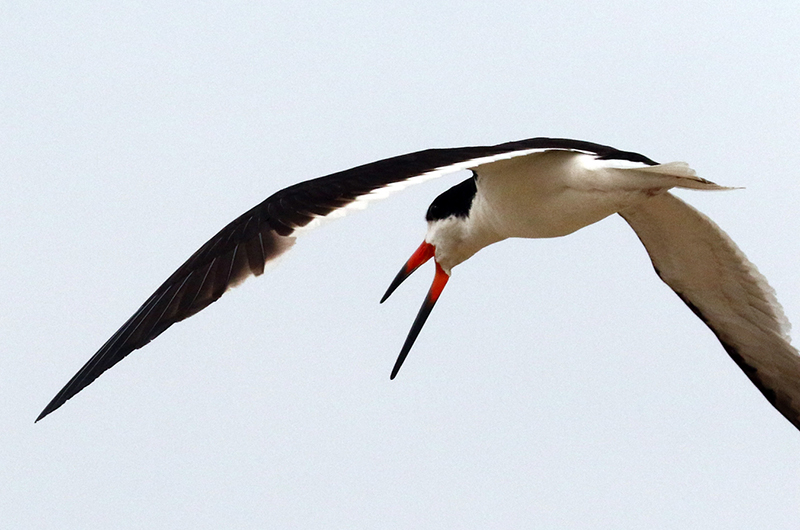Are hummingbirds really pugnacious? Many observers think so but I say they are not always feisty.
At times I feel the eight ruby-throated hummingbirds in my yard are actually playing. Are the chases for fun and not because of hostility or competition for food? Have you ever seen hummingbirds flitting about and chasing each other in and out of a sprinkler? Seems like fun to me.
At this time of year, young hummingbirds may be just simply enjoying their new ability to fly. It has to take practice to fly forward, backwards and up and down. Perhaps this is the hummingbird’s method of exercise, including swift pursuits, artful dodging and incredible maneuvers. It would seem that these activities would keep these lovely little gems in good shape and hone their flying ability in preparation for their long flight over the Gulf of Mexico to their winter haunts. Who knows?
Bird observations are of many sorts. Those of us who are hardcore birders are often stopped at one place or another for a chat, questioned in an email, text or on Facebook. I recently had one email and one conversation.
The first was on August 11. Hal Minis sent me a photo of a couple of feathers he found and could not identify the bird from which they came. Nor could I so I sent it on to the pro — Gus Ben David — who identified it as an immature, first-year red-tailed hawk.
I ran into Isaac Taylor at the Fair and he described a very pale hawk he thought was a red-tail. I pondered it and when I got home, I refreshed my memory and decided that, from his description, it was probably a Krider’s red-tailed hawk. This hawk is a color morph of a red-tailed hawk that is usually found in the Great Plains of the U.S., but they have wings! The description is a very pale hawk with no red tail (almost pink), white breast and a back that is lightly mottled brown and white.
Around the same time, David Padula spotted two red-tailed hawks at Katama, one a “regular” one and the other pale — but not as pale as the one described by Isaac. My thought is that David’s was a leucitic red-tail. If I am not mistaken, light red-tails have bred in Katama over the years.
Lanny McDowell shared a splendid comparison of common and roseate terns on Facebook on August 13, showing how much lighter the back and wings of the roseate tern are compared to the common.
Yellow-billed cuckoos continue to be heard in the Vineyard’s woods. Ursula Goodenough and family have been hearing one on Blue Barque Road during the week of August 15 (probably the same bird I have been hearing) and Jeff Verner has been hearing one in his Edgartown yard since the beginning of August. Jeff added that a great crested flycatcher has also been calling.
Lanny McDowell and Warren Woessner found two whimbrels at Norton Point on August 16.
Ginny Jones commented that she is disappointed that the gray catbirds that have been visiting her West Tisbury yard for 35 years and eating the raisins she has provided, have not been around this spring/summer.
Similarly, Robert Maurice emailed me that he had very few barn swallows this year. I also have fewer barn swallows and no tree swallows this year. Unfortunately, this is probably because of a lack of insects and loss of habitat.
Bob Shriber had a Foster’s tern at Lobsterville on August 17 and a black tern on the 22nd. Bob spotted a common raven on Moshup Trail on the 20th.
Steve Allen at Felix Neck had a greater yellowlegs as well as four greater, one snowy egret and one immature little blue heron on August 17.
A combination of reports from Bill Blake and Lanny McDowell showed an incredible tern show at Wasque on August 19. It was a large number of common, roseate and least terns, along with adult and immature black skimmer. As Matt Pelikan noted, this flock was probably staging to migrate south.
On August 20, Vickie Bologna photographed a very pale woodpecker that is either a young downy or hairy. It was not the best photo so it was hard to tell but I will vote for downy.
I had an addition to my yard list on August 20: two chimney swifts. I also had both two yellow and a prairie warbler using the bird bath. A Baltimore oriole flew into a nearby oak, the first I had seen since the flock of eight that I have had all summer disappeared 10 days ago.
Jeff Bernier shared a nice photo of a spotted sandpiper he spotted at Edgartown Great Pond, adding that it was the first of this species he had seen in several seasons.
With a cottage out on Katama Bay near Wasque, Melinda Fager often sees a black skimmer or two. Recently she came upon a spectacular sight: a flock of at least two dozen on the bay side of Norton Point Beach. Getting ready to head south?
Bob Shriber and I went to Quansoo beach on August 21. The flats are pretty much gone as Tisbury Great Pond fills, but we had 18 species. Seven were species of shorebirds, including piping plover and greater yellowlegs, and both least and common terns in small numbers.
Matt Pelikan noted that there were 1,000 common grackles at the state forest recently — yet another indication that the bird migration is underway.
Please email your sightings to birds@mvgazette.com.
Susan B. Whiting is a past author of Bird News and All Outdoors and the co-author, with Barbara Pesch, of Vineyard Birds 1 and 2.









Comments
Comment policy »